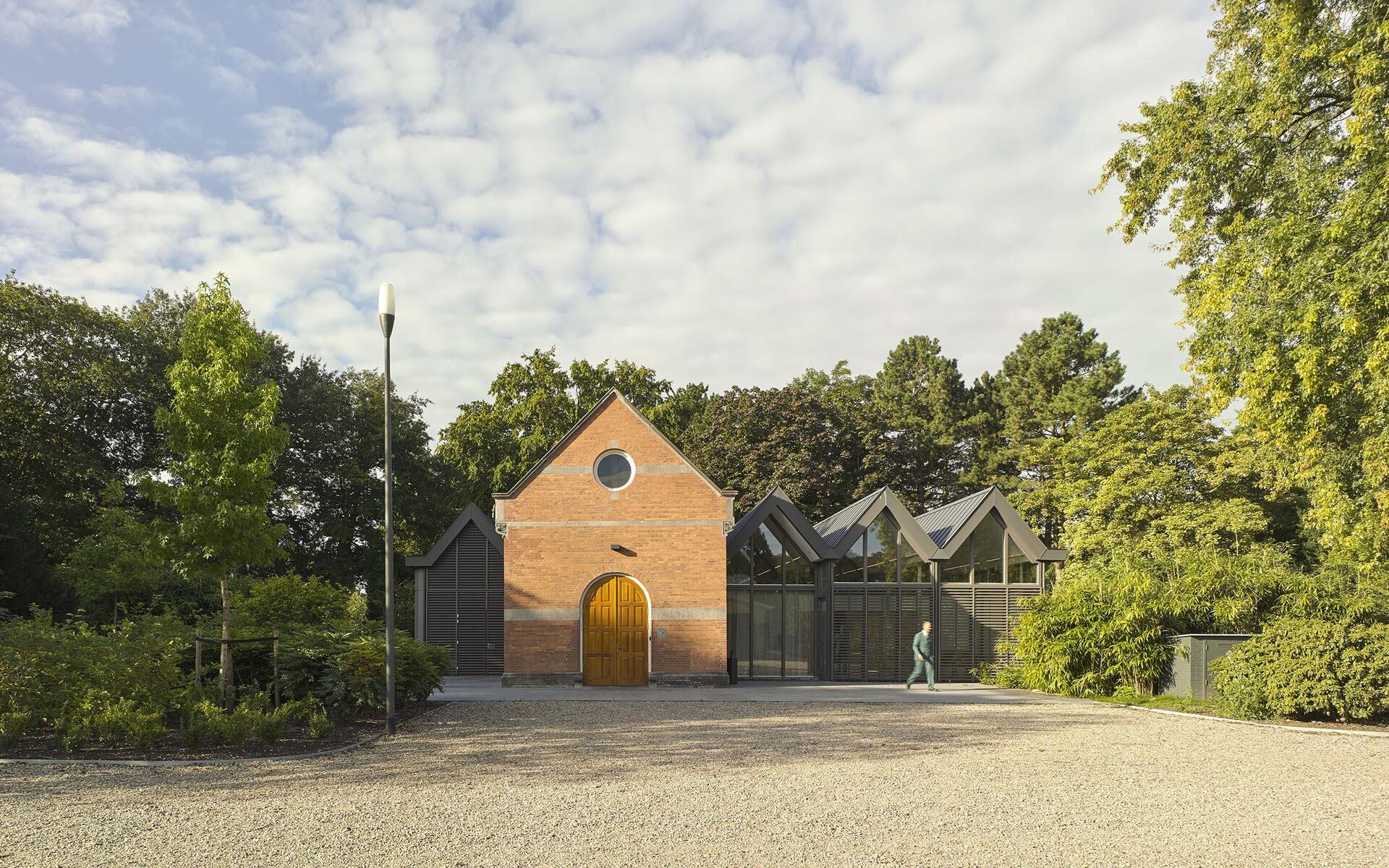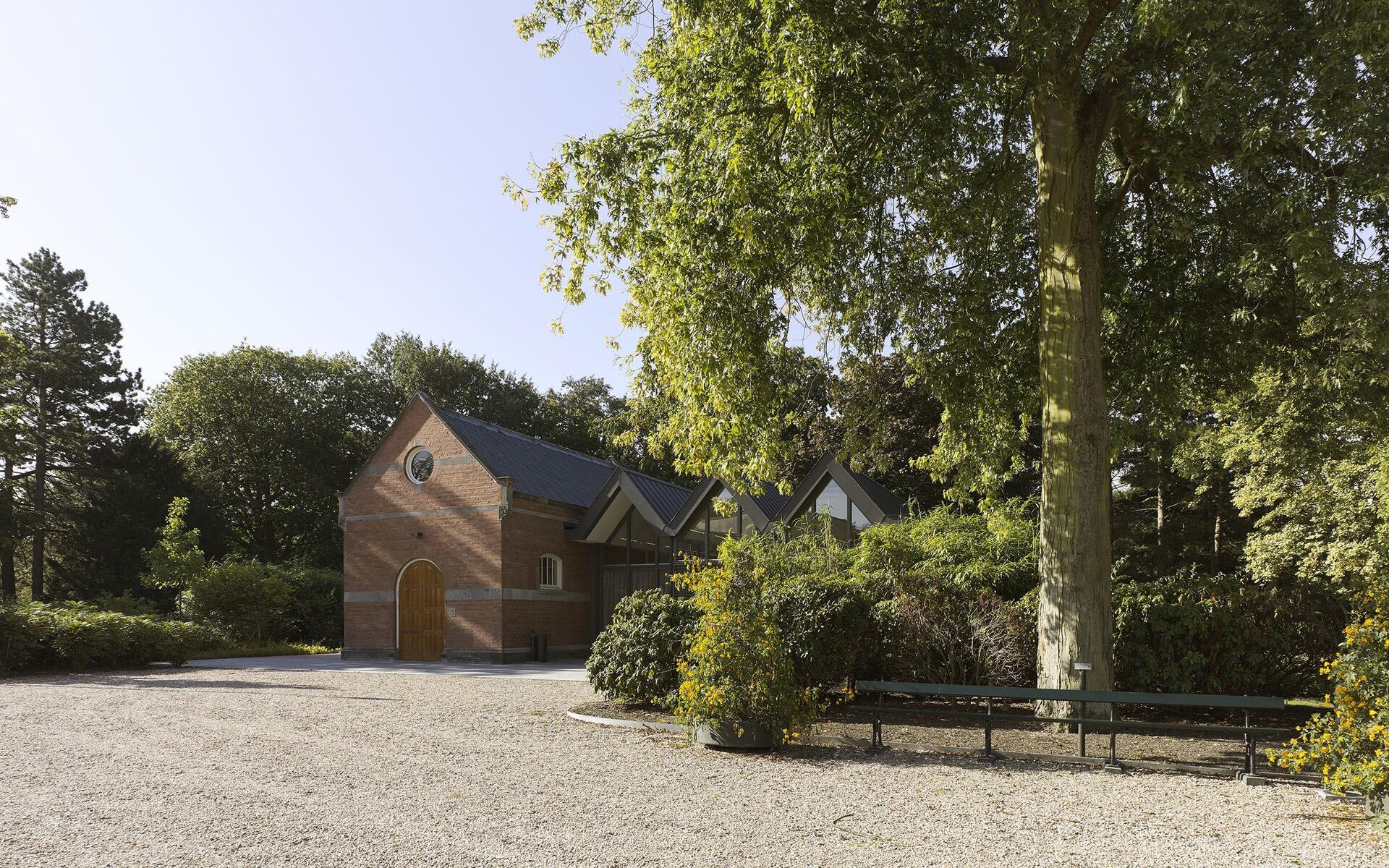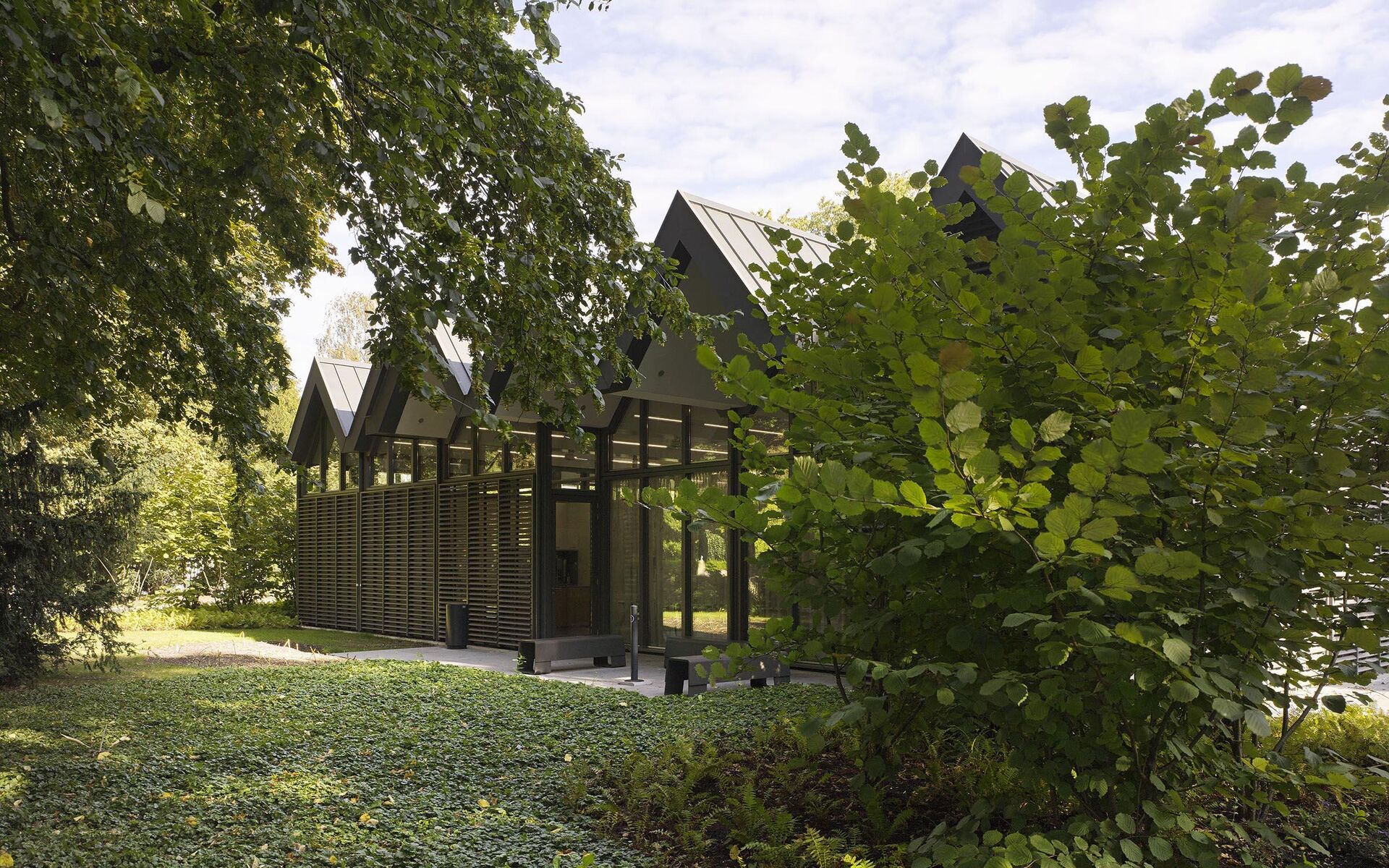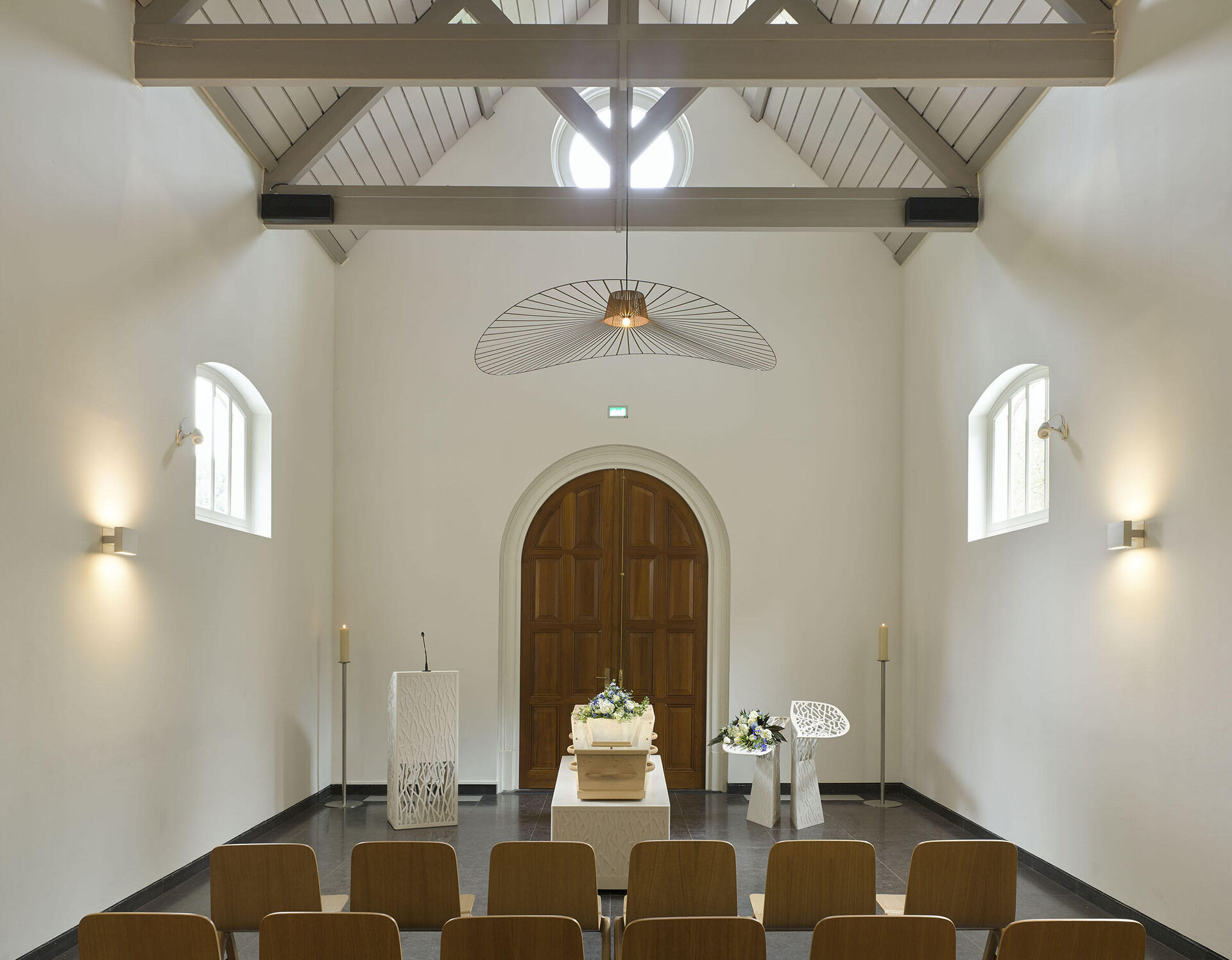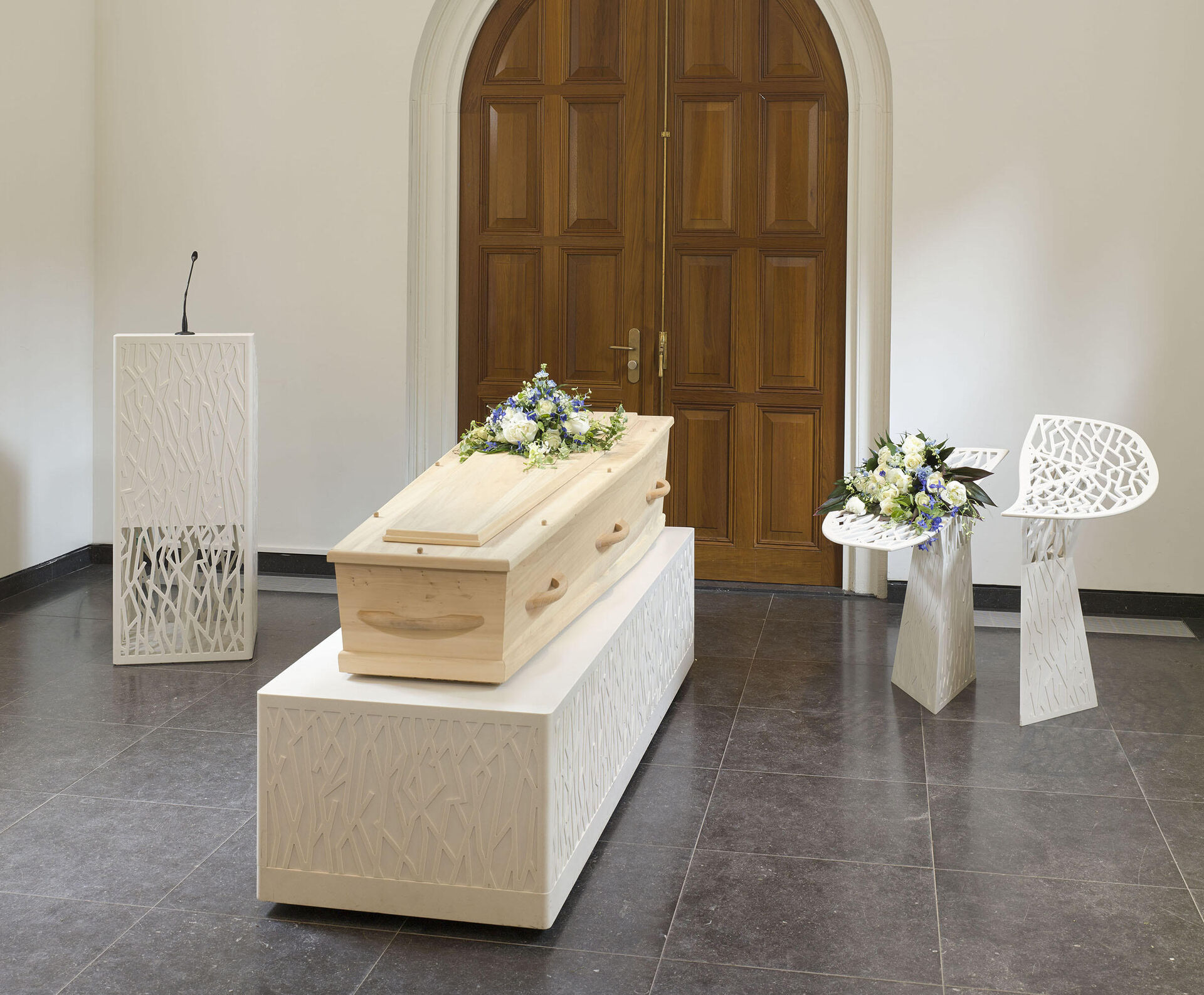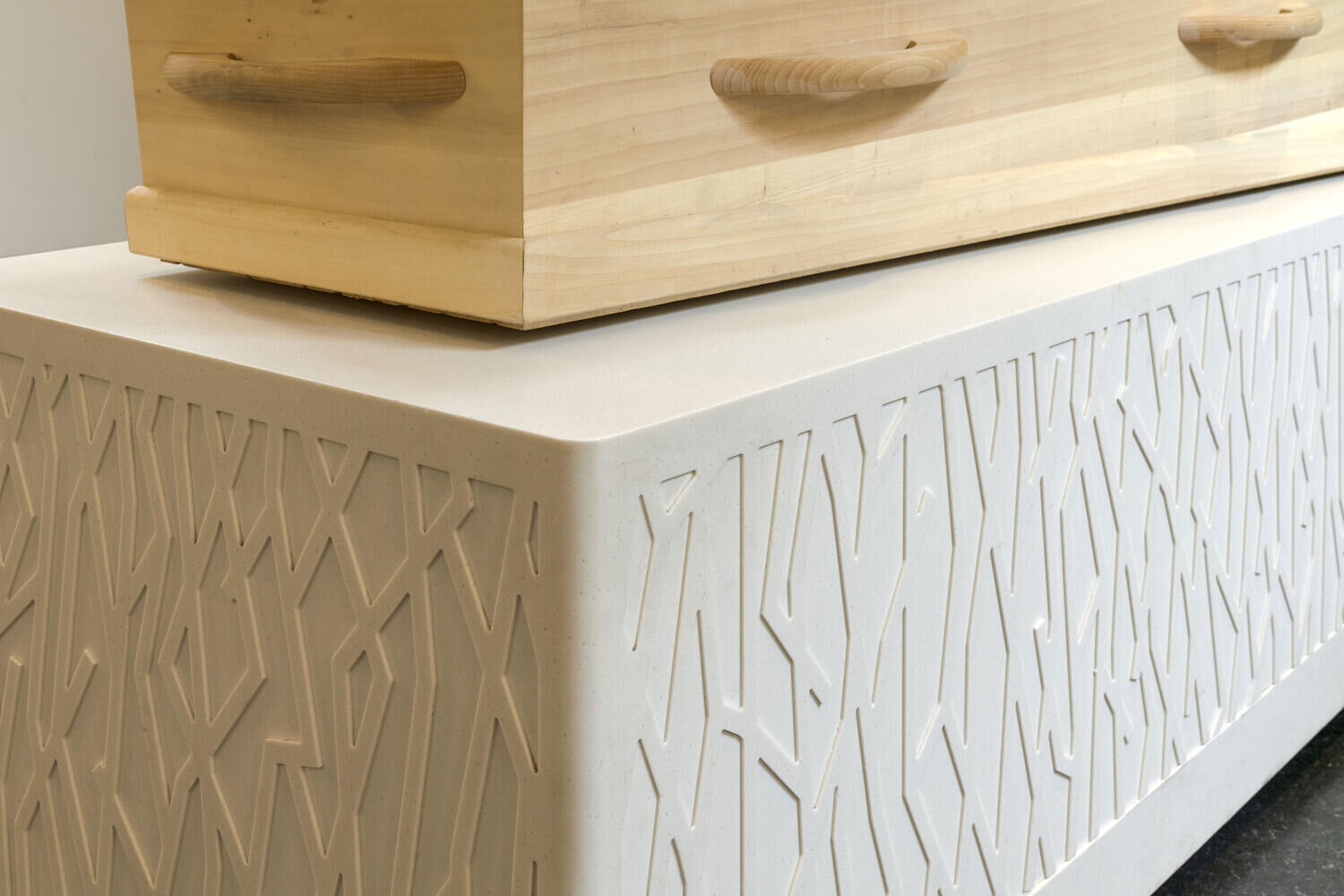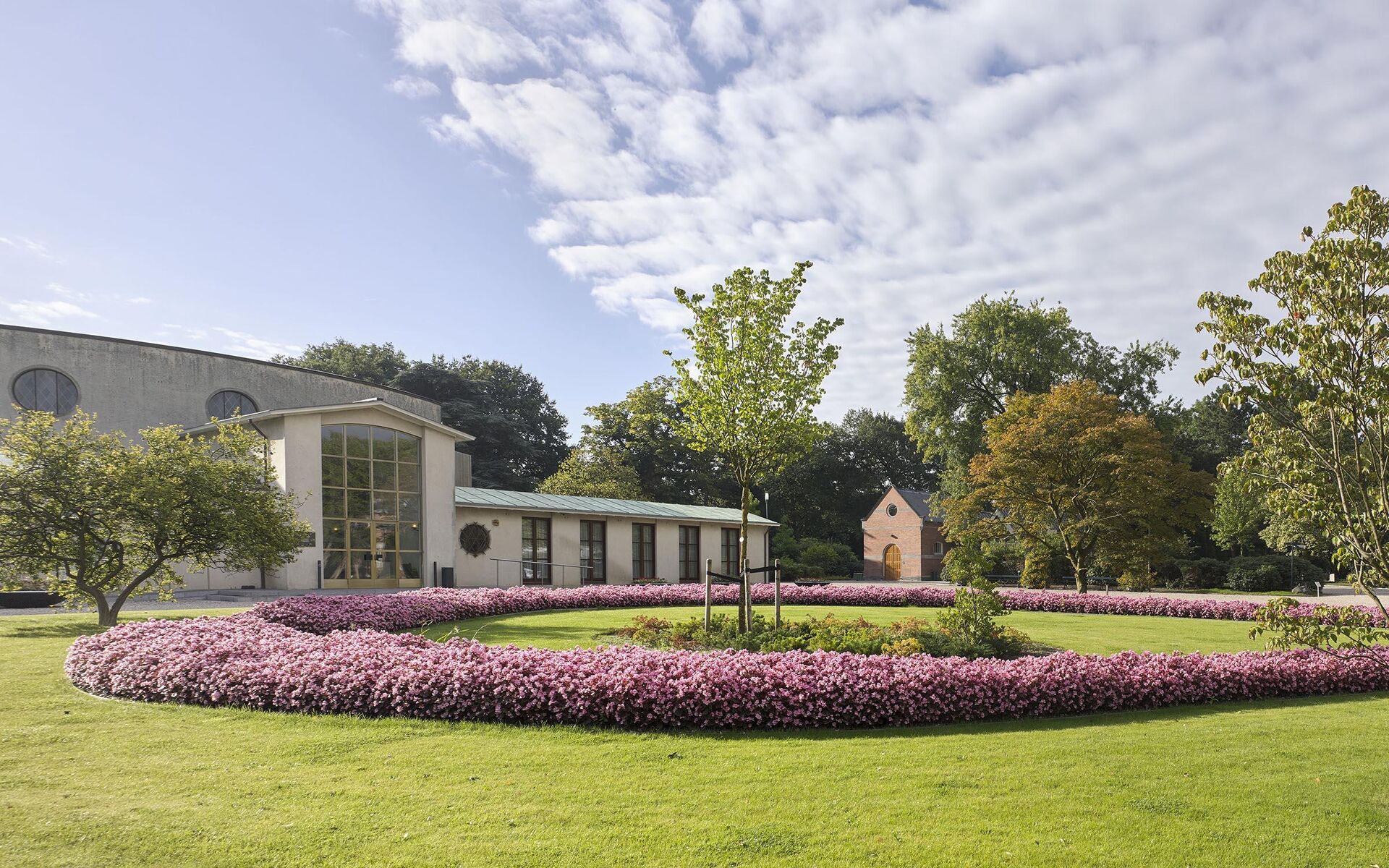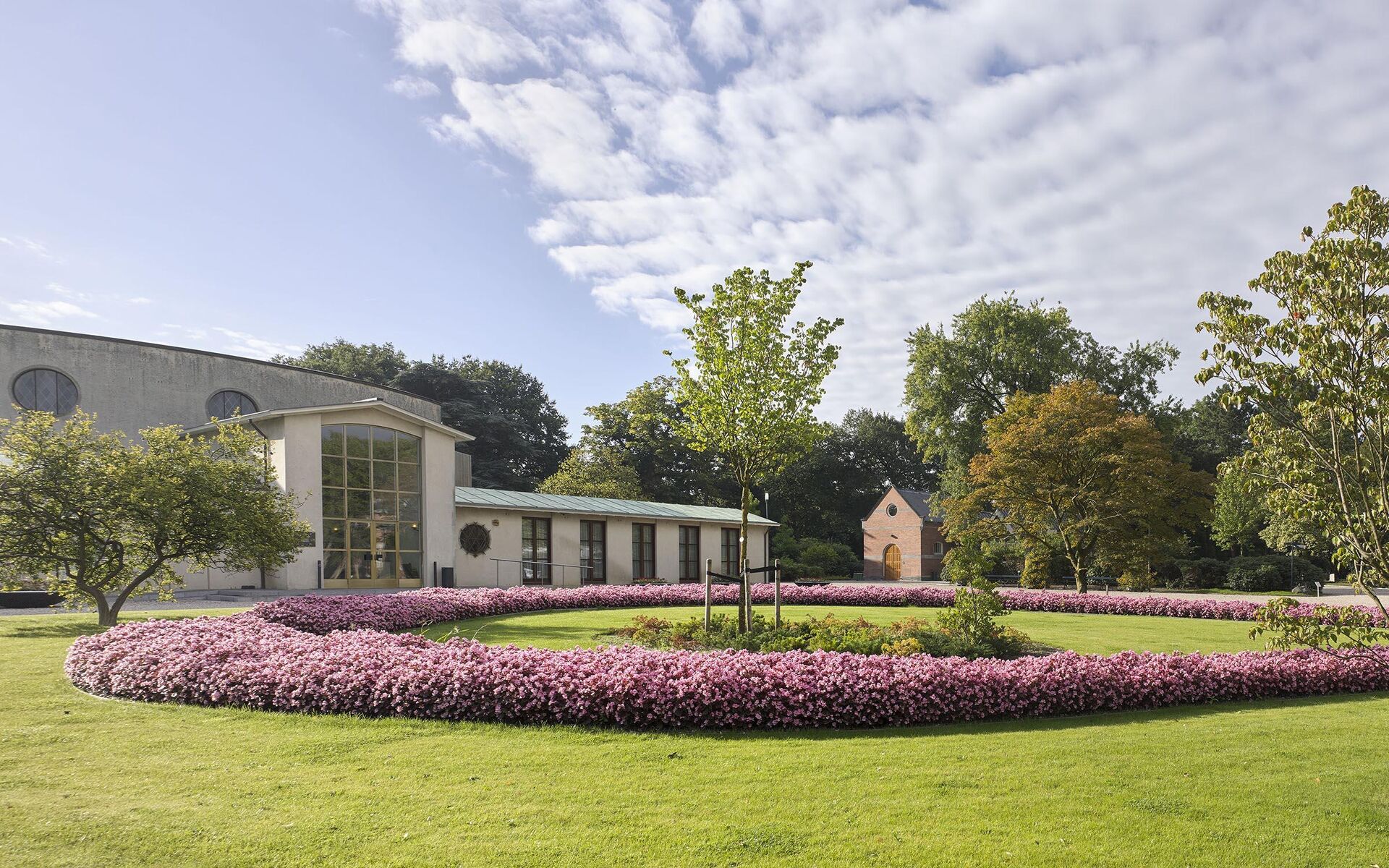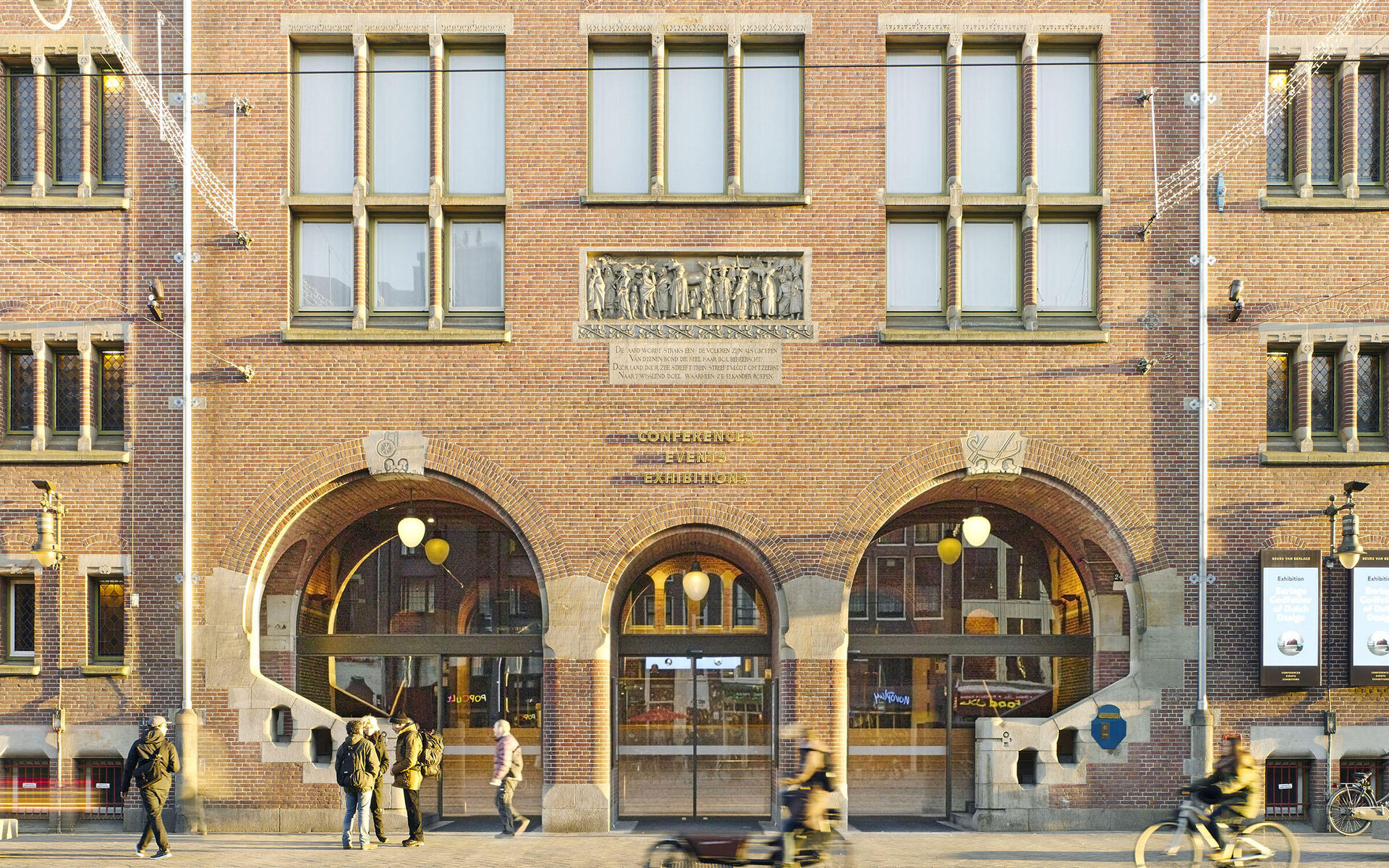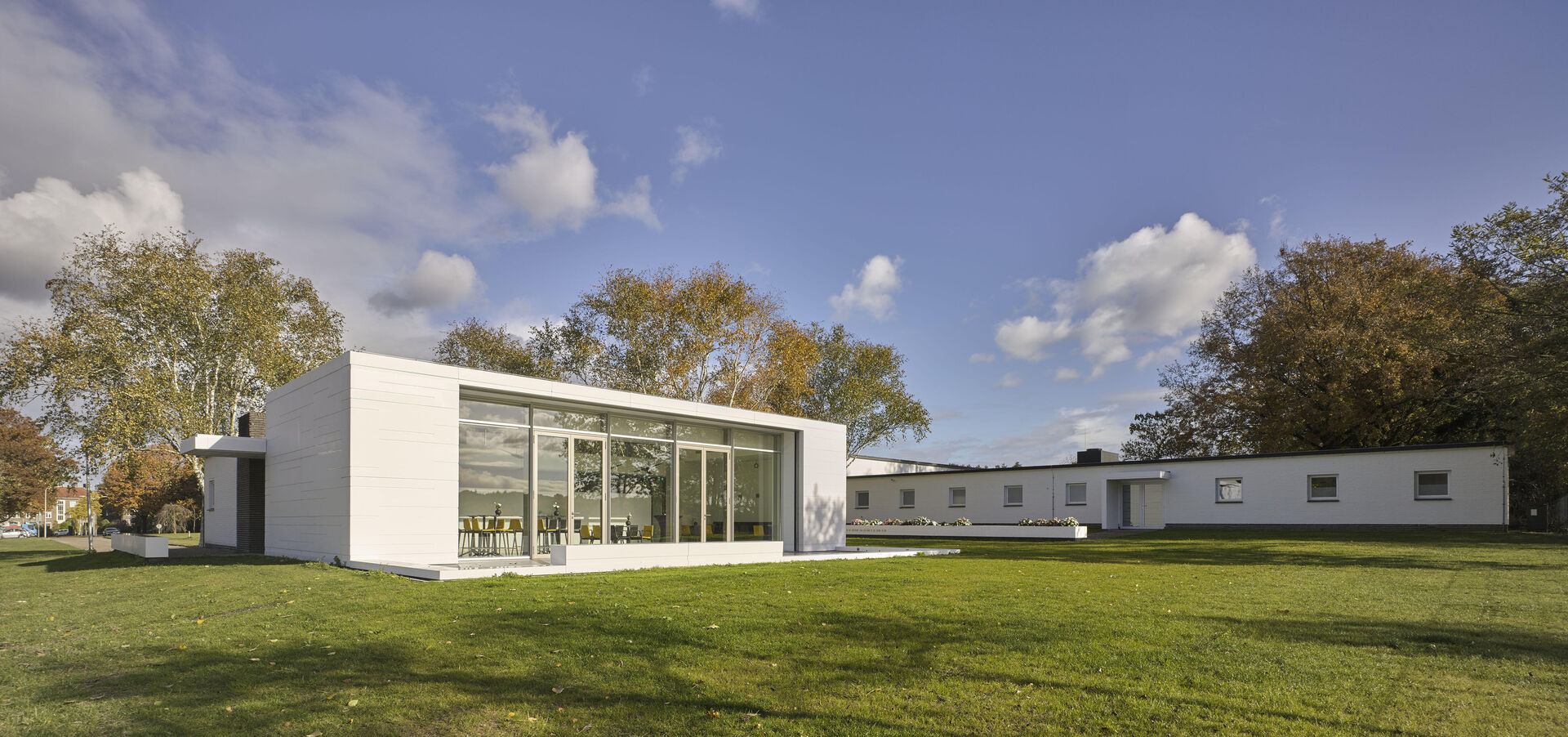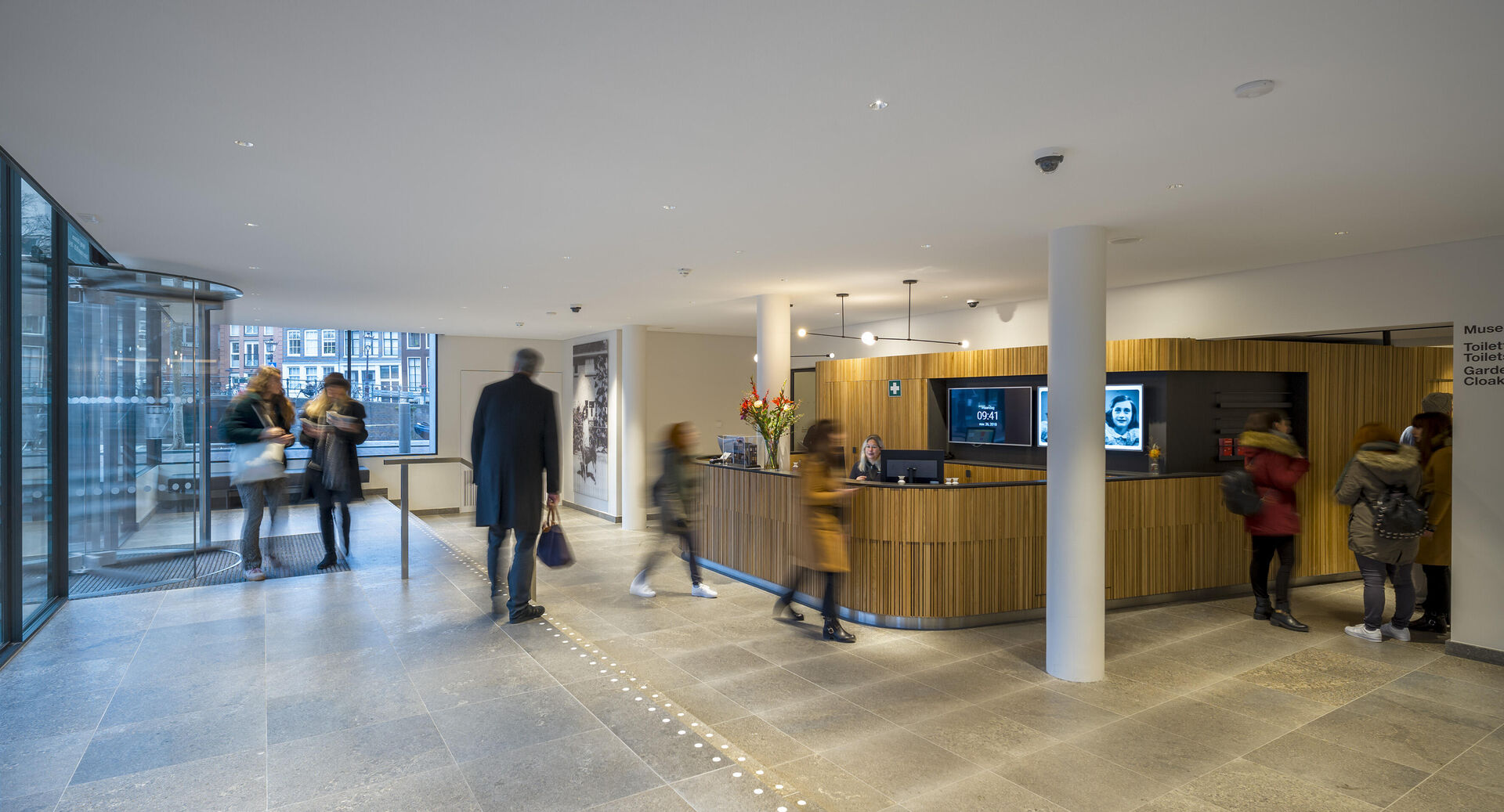- Public
- Farewell
- Transformation
- Interior
- Restoration
- Sustainability
The entrance area to De Nieuwe Ooster has been returned to its former glory. Some buildings, which did not do the listed ensemble justice, have been demolished. The various buildings have been renovated and extended. By moving the amenities to a different location on the cemetery, more space was created to arrange the ceremonies of taking leave and remembering. A new crematorium has been added to the large auditorium, the small auditorium has been moved to the former bier building and a second coffee room has been added. Karres and Brands have designed the surrounding landscape to match the original Springer plans.
De Ooster cemetery was designed in 1889 by landscape architect Springer. He designed a symmetrical entrance area in a country park, which was complemented with buildings in neo-renaissance style by architect Weissman. In 1939 the central reception building was replaced by an auditorium designed by municipal architect Leupen. Over the years, building volumes and functions were added, leading to a rather disorderly result.
- Design: 2010-2012
- Client: Municipality of Amsterdam, city district Oost
- Location: Amsterdam
- Delivery: 2014
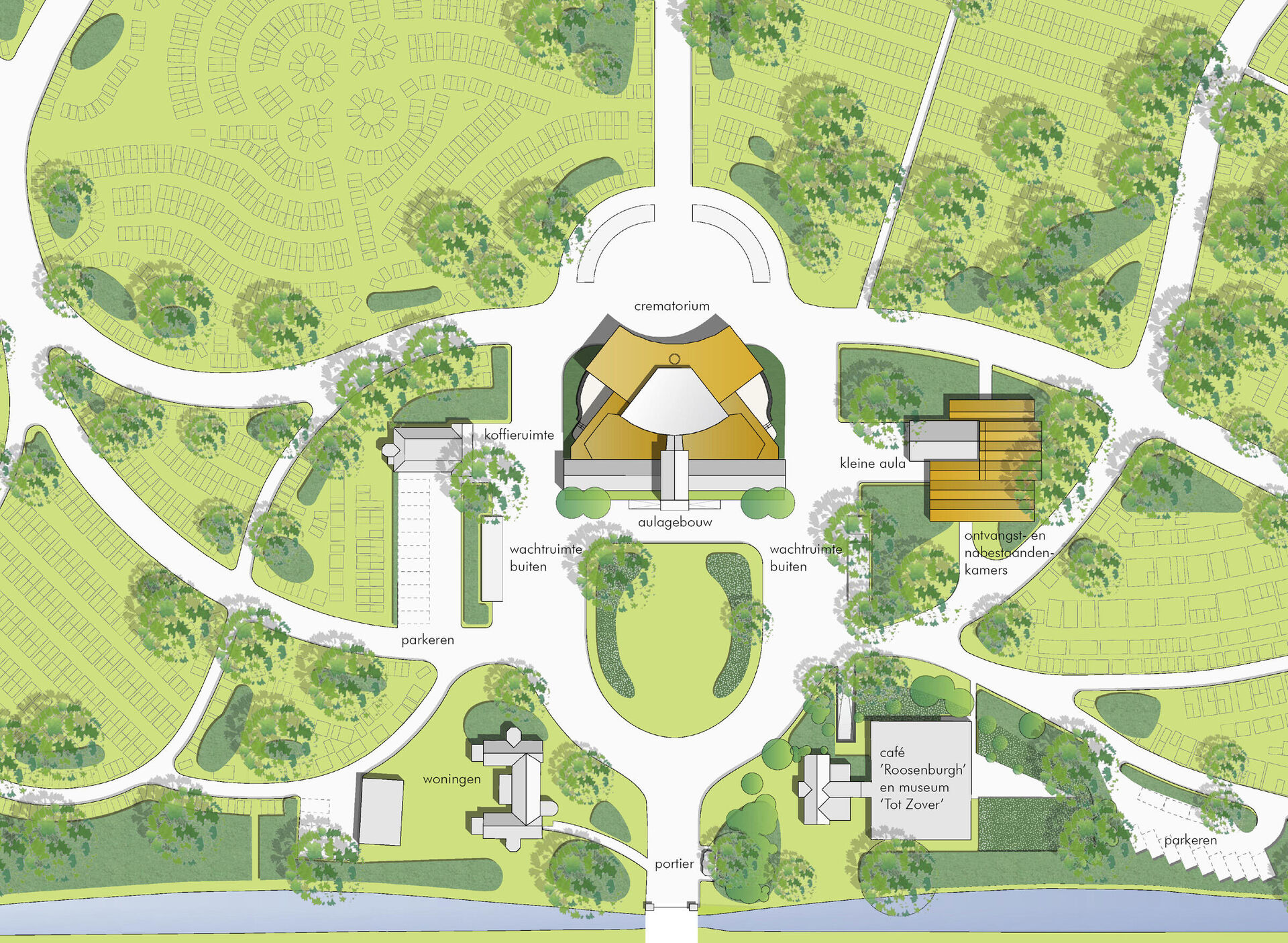
Monumental auditorium and extension
When redesigning the entrance area, later additions were demolished. The original clarity and symmetrical composition envisaged by Springer have been restored. The entrance area of De Nieuwe Ooster cemetery has thus regained its monumental clarity of 1889.
The monumental auditorium by Leupen from 1939 has been renovated and extended with a new crematorium on the first floor behind the auditorium. The symmetry of the existing main building has been consistently continued in the champagne-coloured, grille-cladded volume. The reception areas to either side of the auditorium have been renovated. Enclosed outside areas have been added. In the central axis running through the auditorium to the cemetery, a round lifting plateau has been installed which disappears into the floor. During the funeral ceremony, the coffin sits on a specially designed piece of furniture made from synthetic stone, a catafalque. At the end of cremation ceremonies, the catafalque with the coffin is moved on to the lifting plateau and lifted up. On the first floor, next of kin can take leave near the oven.
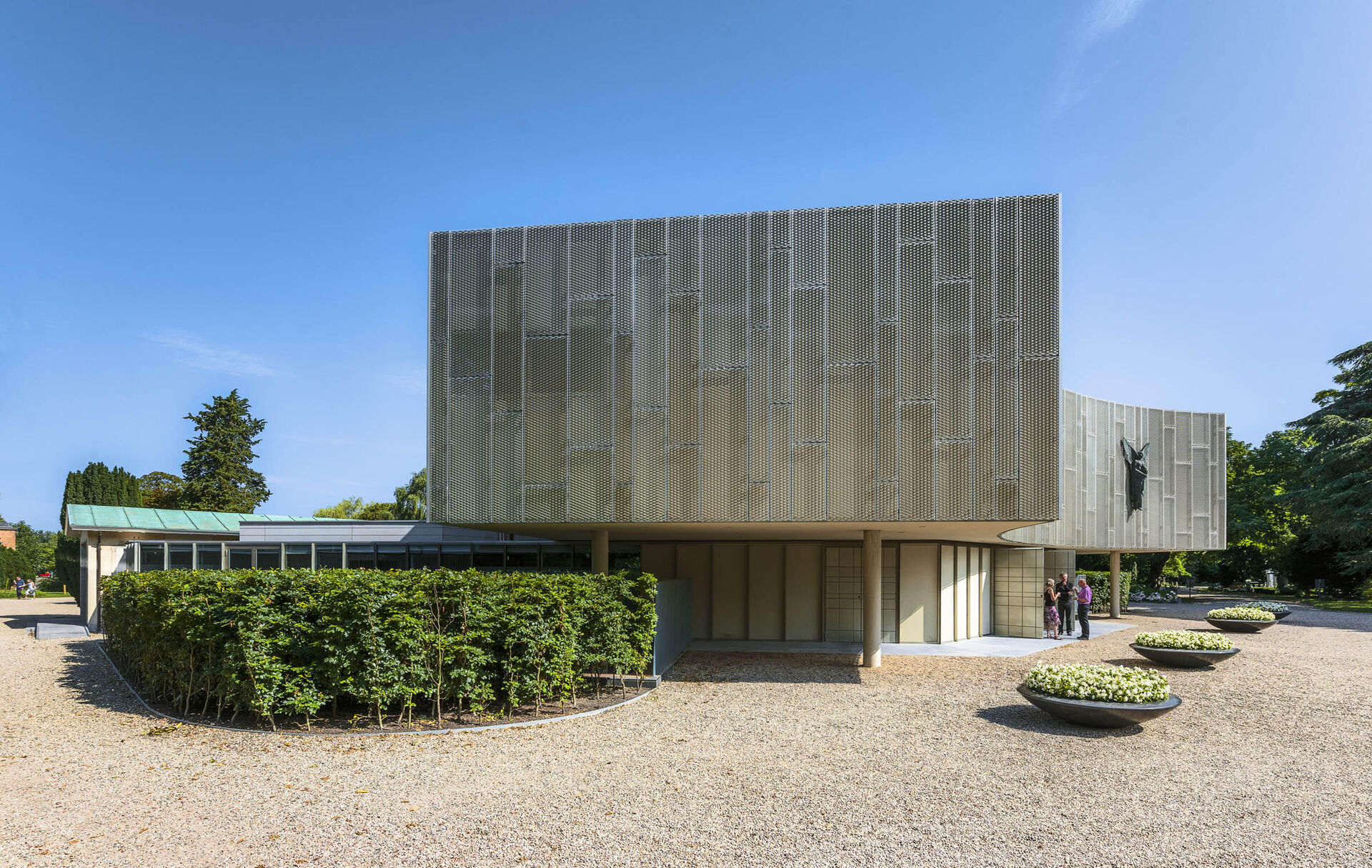
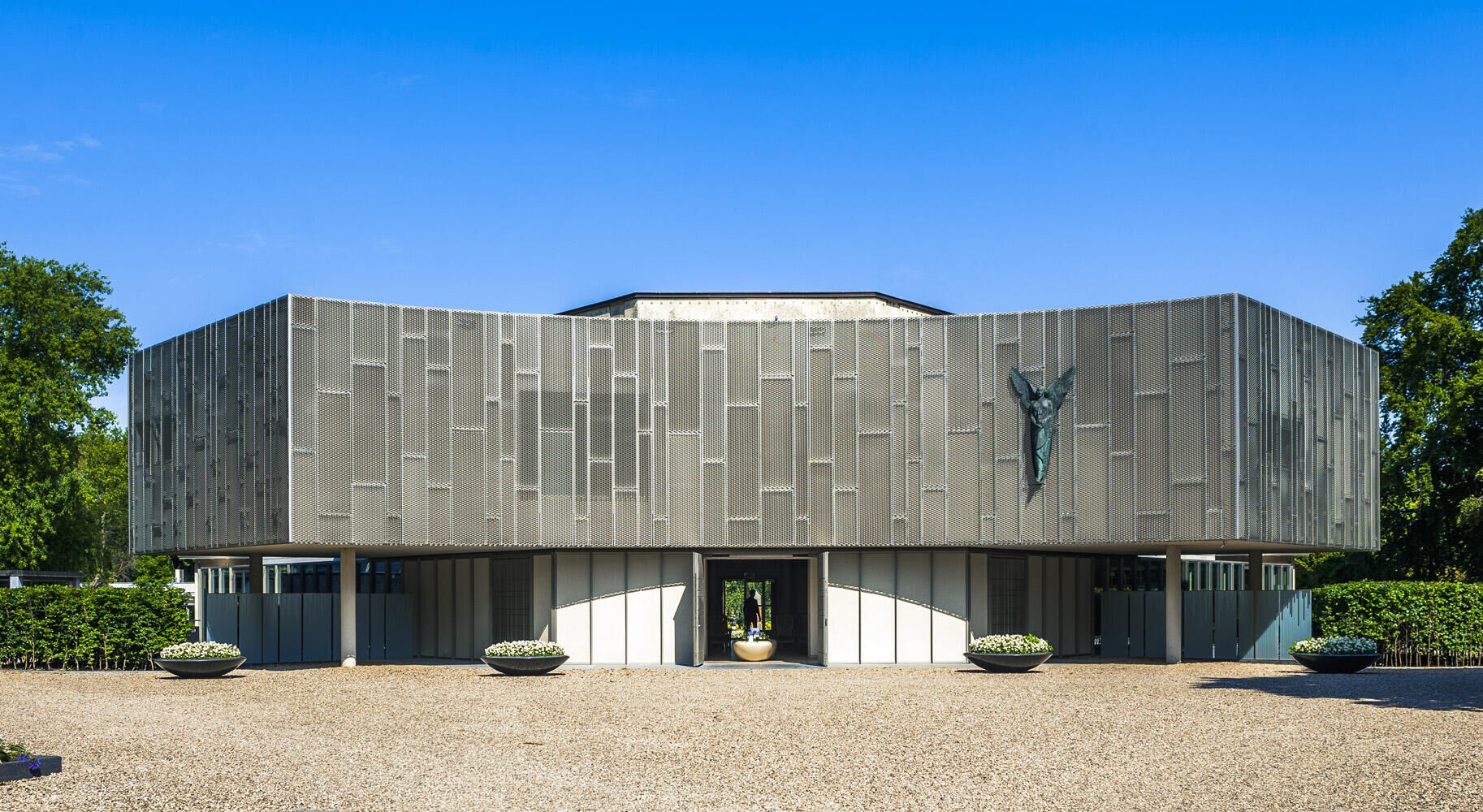
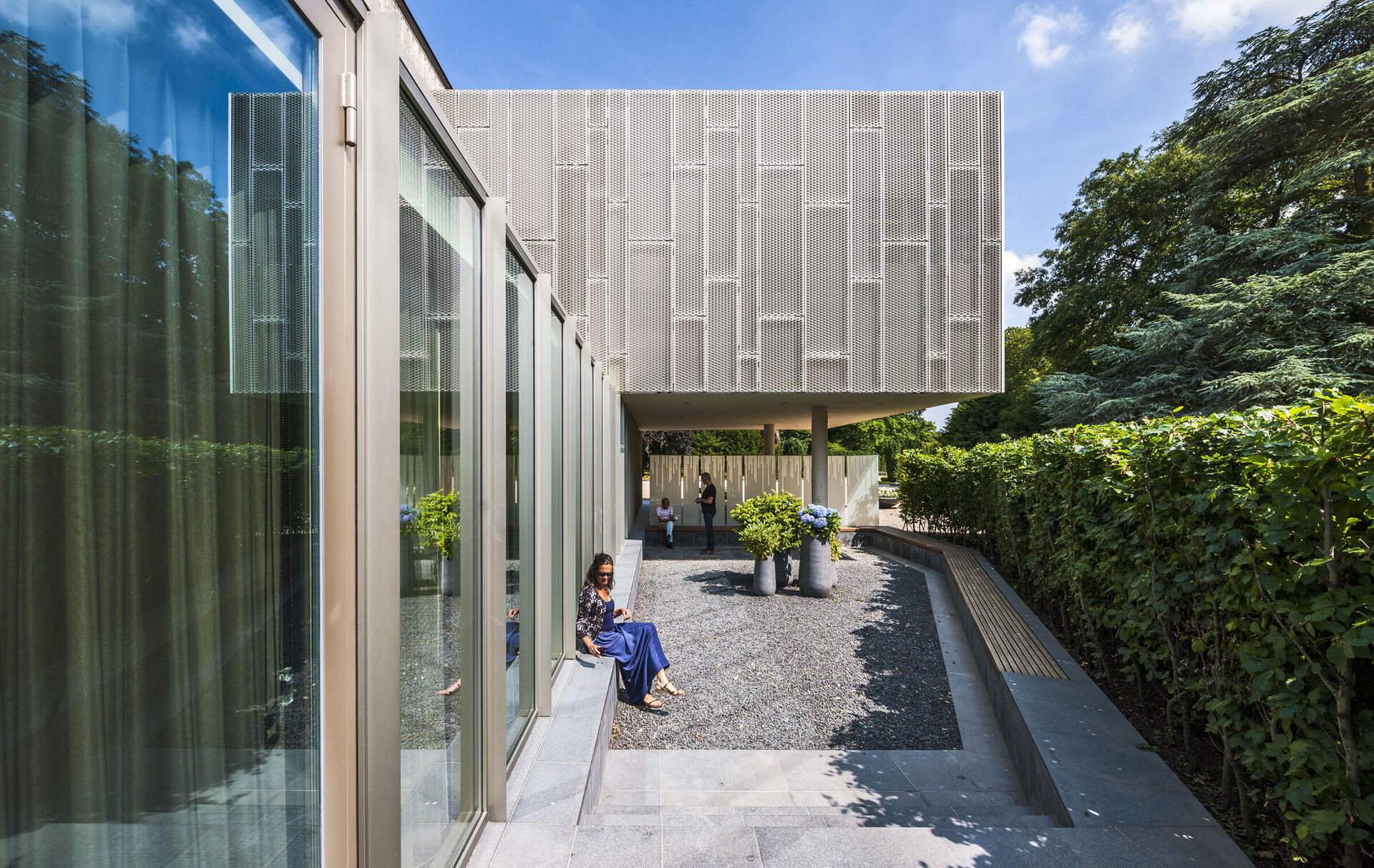
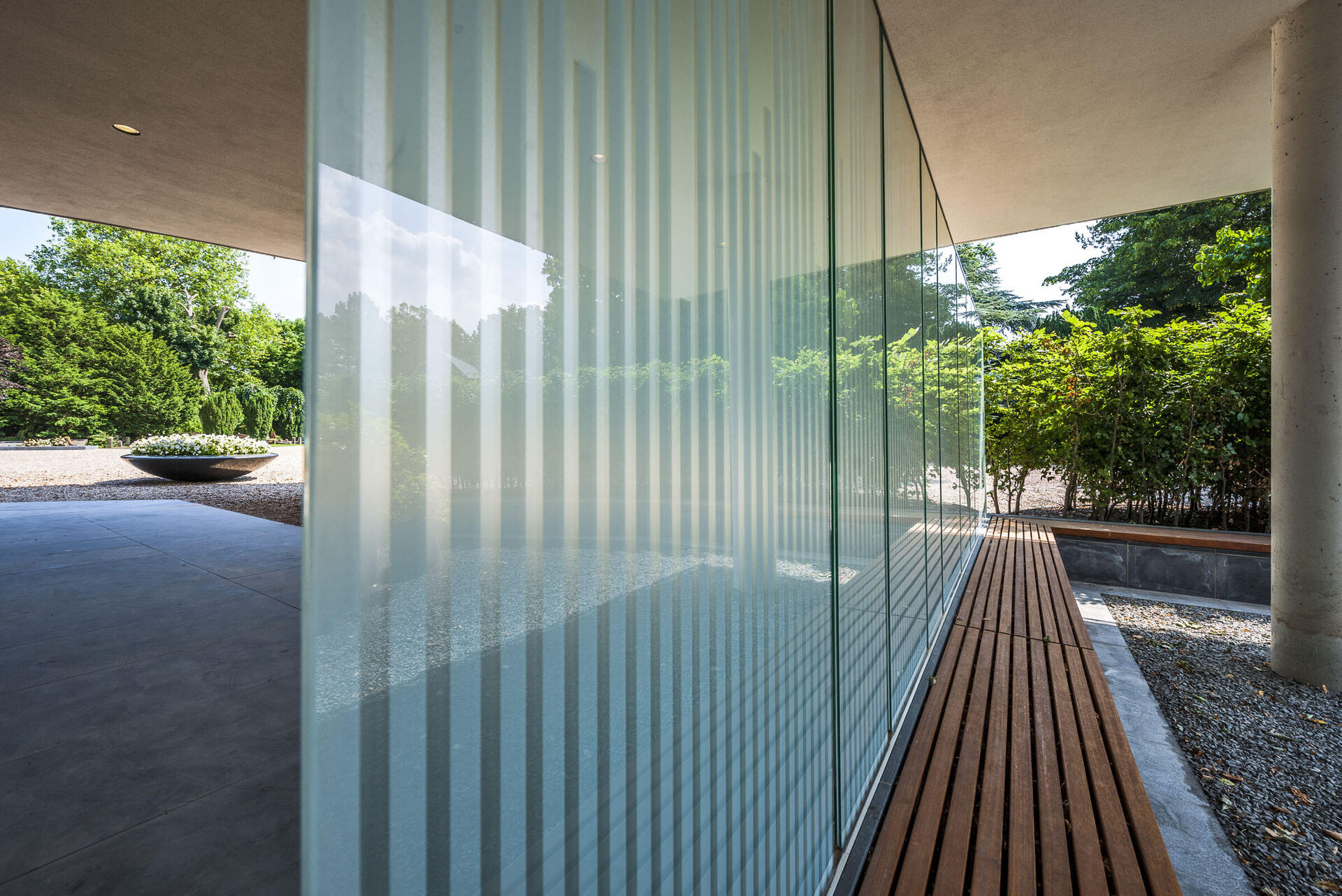
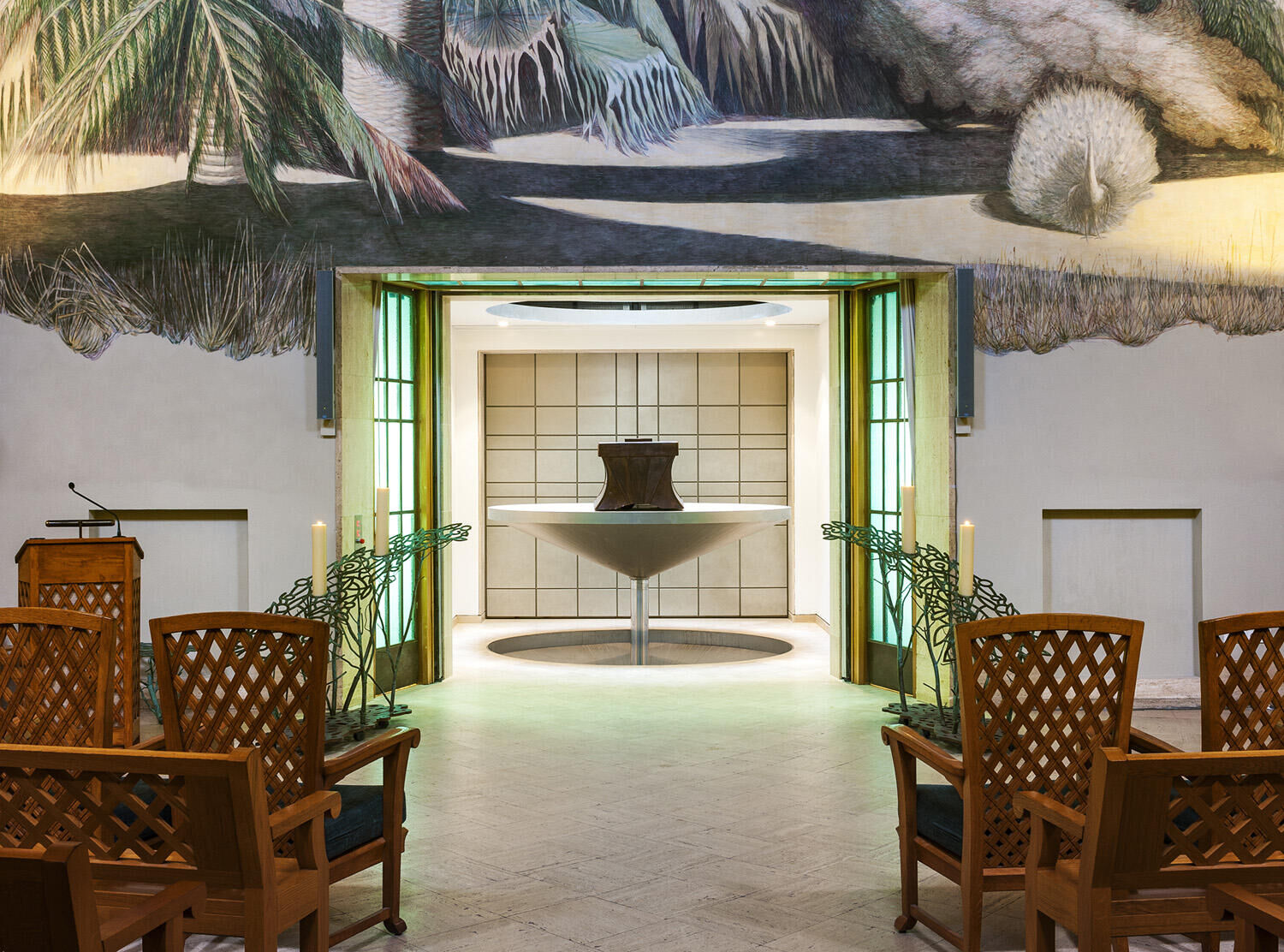
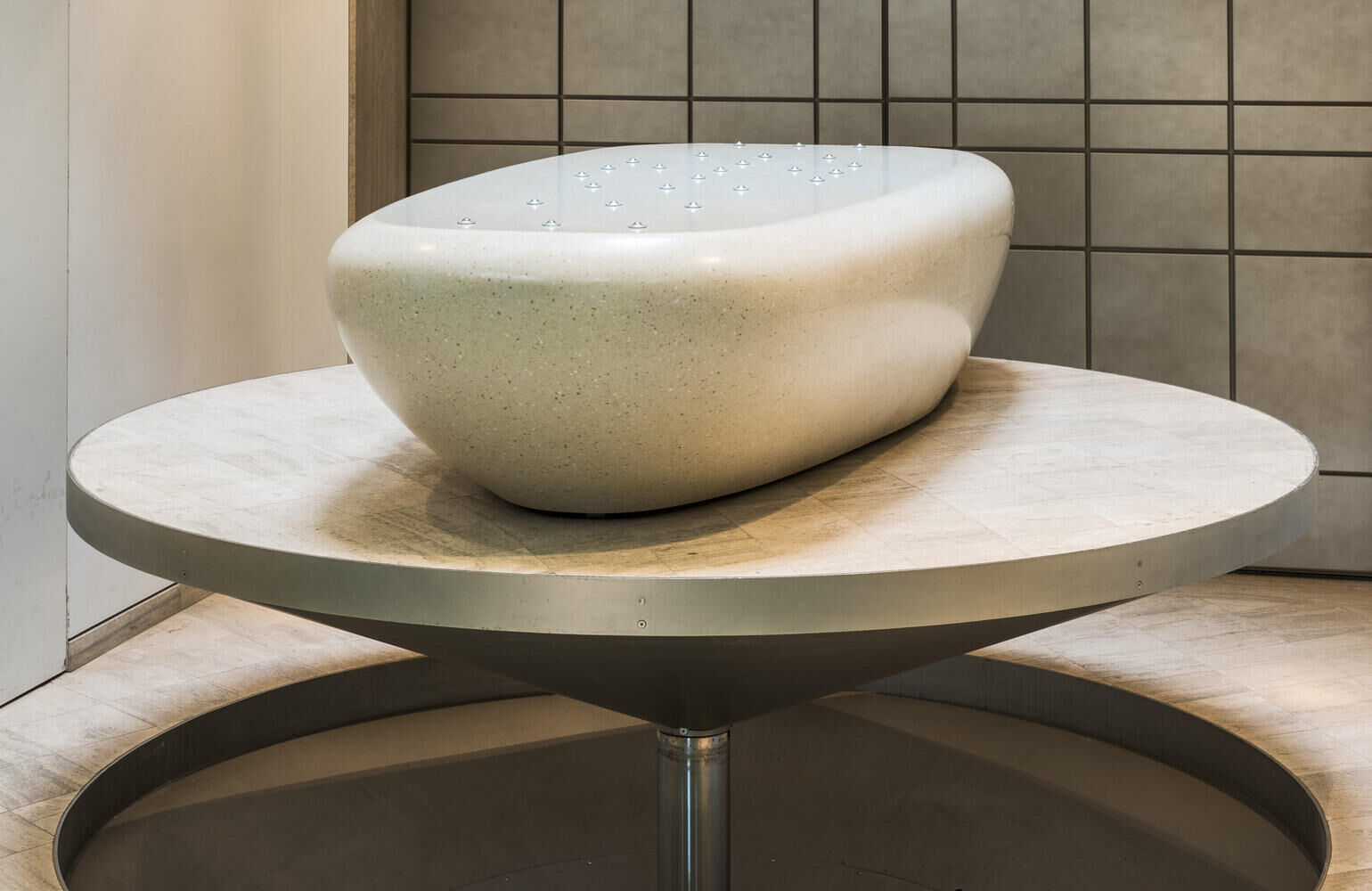
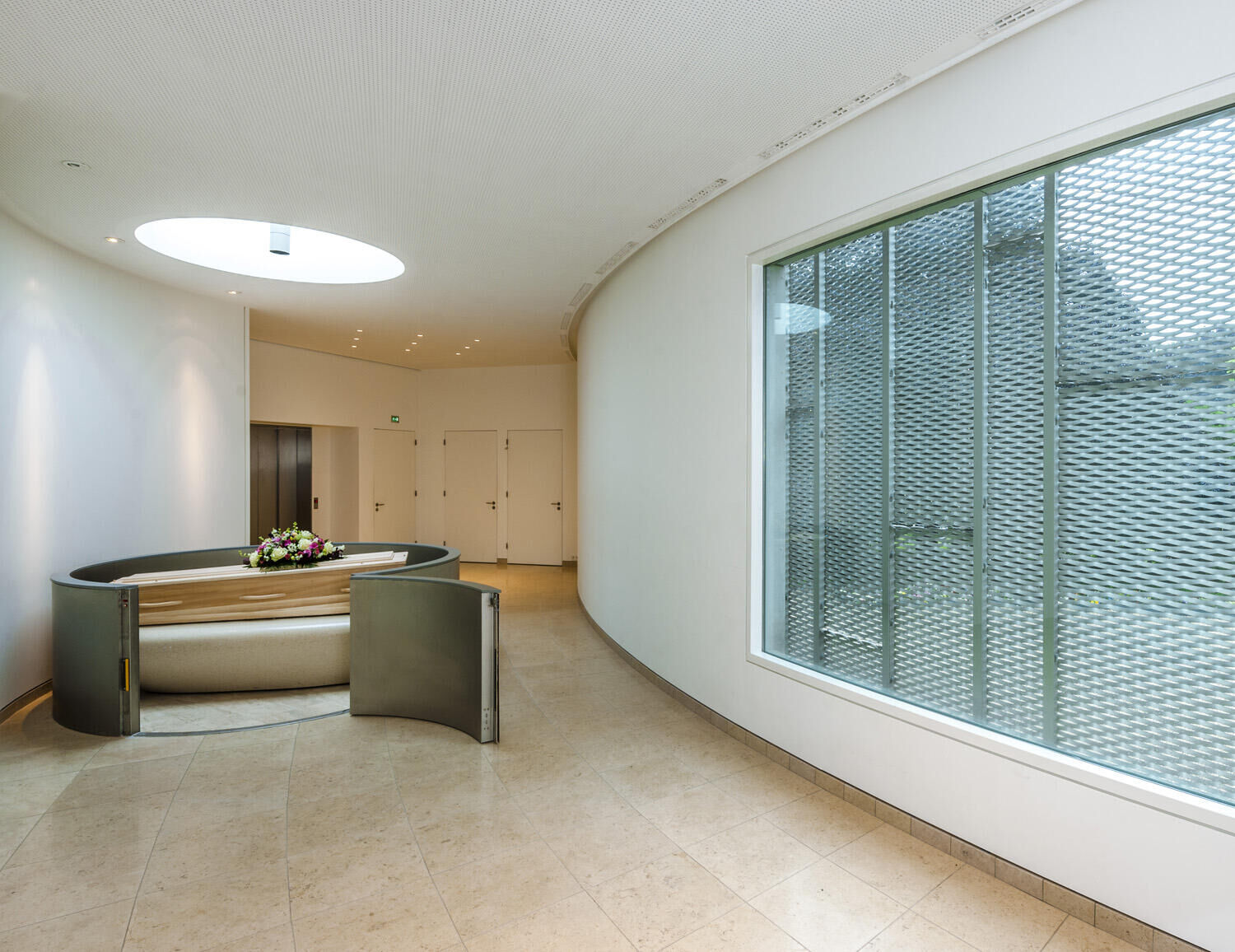
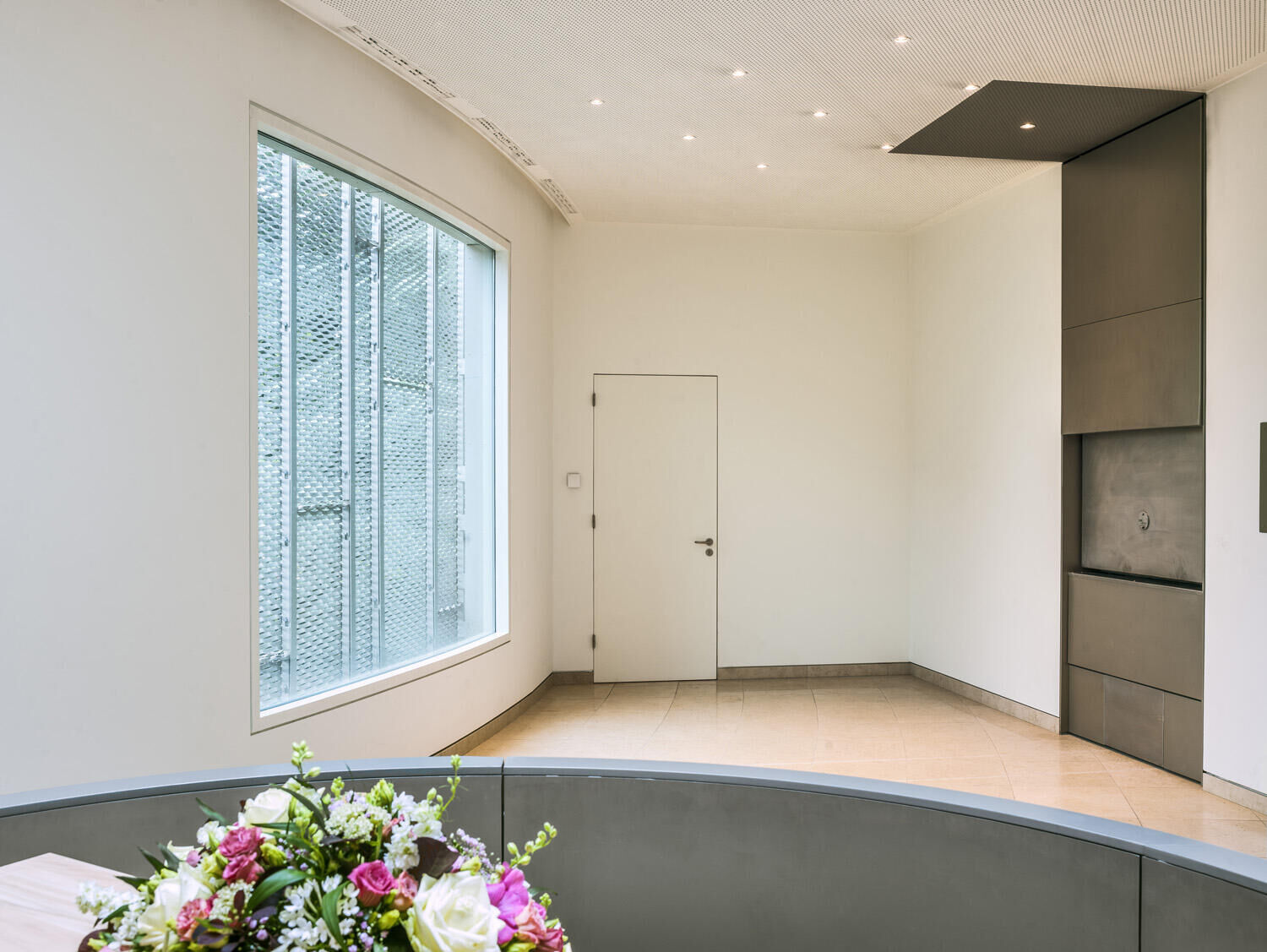
Small auditorium
The original bier building designed by Weissman has been transformed into a small auditorium. All later additions have been demolished and replaced by a fine-mesh structure of zinc saddle roofs on columns and timber walls. The extension contains reception rooms, a coffee room and facilities areas. The timber façades look on to the surrounding green area. Wooden slatted sections ensure the necessary privacy during funeral ceremonies.
The transformation of De Nieuwe Ooster into a contemporary remembrance park won the 2014 Gouden Piramide (Golden Pyramid) Prize for the multiannual transformation of the cemetery as a whole. The Gouden Piramide is the state prize for inspired commissioning.
